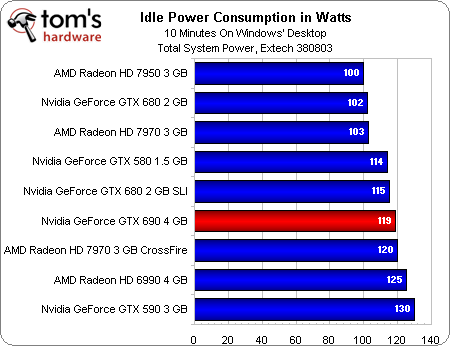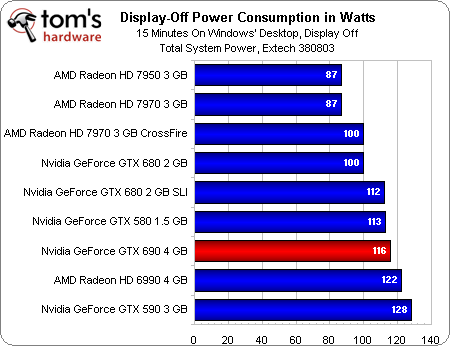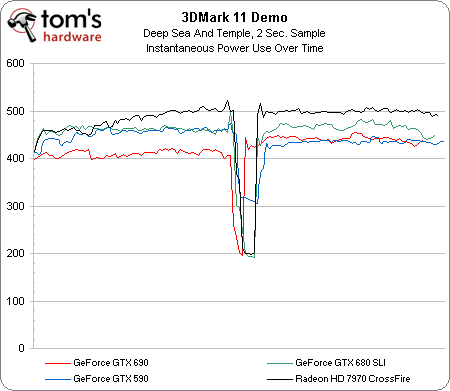GeForce GTX 690 Review: Testing Nvidia's Sexiest Graphics Card
We already know that Nvidia's GeForce GTX 690 sports two GK104s and is priced at $1000. But hardware like this is fun to read about. Oh, you actually want to buy one? Expect performance just shy of two GTX 680s in SLI, and good luck tracking one down!
Power Consumption
That the latest-generation cards are at the top of this chart speaks volumes about the technologies used by both AMD and Nvidia to reduce the power use of even their highest-end hardware.
Although Nvidia’s GeForce GTX 690 doesn’t fare particularly well overall, it is the second-most power-friendly solution amongst the dual-GPU configurations, just behind two GeForce GTX 680s in SLI.
AMD really struts its stuff when your displays go to sleep. Its ZeroCore technology allows two Radeon HD 7970s to use as much power as one GeForce GTX 680 at idle. And whereas the dual-GPU AMD setup sheds 20 W right off the bat, GeForce GTX 690 is only able to drop 3 W in the same situation.
Each GeForce GTX 680 is rated with a 195 W maximum board power. Each Radeon HD 7970 is rated for 250 W. The GeForce GTX 690’s board power is set at 300 W.
It makes sense, then, that it’d use less power under load compared to twin GeForce GTX 680s. Two Radeons in CrossFire are noticeably more egregious power consumers. Even the GeForce GTX 590 averages higher use than the new GeForce GTX 690.
Truly, this is where the Kepler architecture’s emphasis on performance/watt shines. It would have been nice to see Nvidia spend more time cutting power at idle, like AMD, given the majority of time we spend not gaming. However, the savings under load are certainly impressive.
Get Tom's Hardware's best news and in-depth reviews, straight to your inbox.
Current page: Power Consumption
Prev Page Noise And Temperatures Next Page GeForce GTX 690 4 GB: Beauty Isn’t Always Practical


